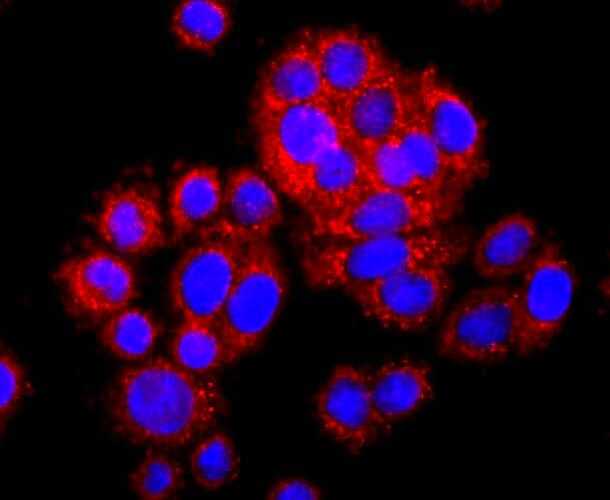Ubiquitin:
Ubiquitin is a small (8.6 kDa) regulatory protein found in most tissues of eukaryotic organisms, i.e. it occurs ubiquitously. It was discovered in 1975 by Gideon Goldstein and further characterized throughout the 1970s and 1980s.
The addition of ubiquitin to a substrate protein is called ubiquitination (or, less frequently, ubiquitylation or ubiquitinylation). Ubiquitination affects proteins in many ways: it can mark them for degradation via the proteasome, alter their cellular location, affect their activity, and promote or prevent protein interactions. Ubiquitination involves three main steps: activation, conjugation, and ligation, performed by ubiquitin-activating enzymes (E1s), ubiquitin-conjugating enzymes (E2s), and ubiquitin ligases (E3s), respectively. The result of this sequential cascade is to bind ubiquitin to lysine residues on the protein substrate via an isopeptide bond, cysteine residues through a thioester bond, serine and threonine residues through an ester bond, or the amino group of the protein’s N-terminus via a peptide bond.
Immunohistochemistry using antibodies to ubiquitin can identify abnormal accumulations of this protein inside cells, indicating a disease process. These protein accumulations are referred to as inclusion bodies (which is a general term for any microscopically visible collection of abnormal material in a cell). Examples include:
Neurofibrillary tangles in Alzheimer’s disease
Lewy body in Parkinson’s disease
Pick bodies in Pick’s disease
Inclusions in motor neuron disease and Huntington’s disease
Mallory bodies in alcoholic liver disease
Rosenthal fibers in astrocytes.
Image:Immunofluorescence using antiubiquitin antibody.
